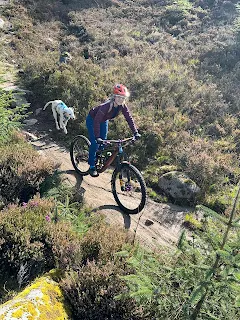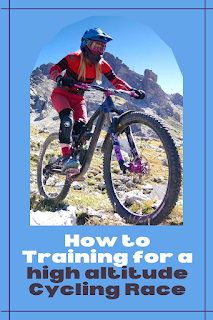I am currently training for the biggest physical and mental challenge I have ever put my body and mind to. I am taking part in the last-ever Yak Attack mountain bike race in Nepal. The Yak Attack is the highest mountain bike race in the world. It comprises of eight days racing in the Himalayas with Annapurna mountains as the backdrop. It reaches a height of 5416m on the Thorong la pass and ends with a 40km enduro downhill day. This is not called the hardest mountain bike race for nothing. It will push my physical and mental barriers and I can not wait.
But gearing up for this high-altitude race is not just about the physical and mental challenges it is also about understanding the prep work I need to put in now to be able to compete at these extremes. I have been asked so many times what I am doing to prepare for this race and I think it is time I explained how I am training for the highest-altitude mountain bike race in the world.
Let's start with hydration this is a good place to start.
Hydration
Hydration whilst training is one of the most important elements. It supports our muscle function, reduces fatigue and also helps aid recovery. The power of being hydrated is one that can be overlooked. We can all be guilty of not drinking enough. But I just can't let that happen at the moment. It is too important for me to train at my fullest potential.
Being hydrated is important for so many reasons it helps to regulate my body temperature whilst training, it ensures I can get the most efficient cardiovascular training effort possible and helps to prevent cramps, these are a few of the reasons being hydrated is important.
So I have been putting a big focus on trying to understand what my body needs and where I should be getting it from. I realised pretty quickly that something was lacking in my training and I was feeling the effects of dehydration and needed to do something about it quickly.
Here is where I found Trace Minerals 40,000 Volts Electrolyte Concentrate. I was on the lookout for an electrolyte formula and I am glad I found this one. 40,000 Volts can turn any drink into an electrolyte sports drink. So I can add this to my favourite squash in my water bottle and I am good to go. Trace minerals have combined their concentrated Ionic trace minerals complex with Utah sea minerals in a base of liquid potassium to make the perfect rehydration solution.
Trace Minerals 40,000 Volts Electrolyte Concentrate has a more potent formula than before! Helps boost stamina, energy, and endurance lost through electrolyte depletion. Help maintain healthy electrolyte levels in the body for improved performance and fewer muscle cramps. Can also be used to help prevent night muscle cramps.Adding electrolytes to my drinks is essential in my training because of their benefits to my body. Having almost finished my bottle of 40,000 Volts I can say I have found my favourite way to add electrolytes to my training. There is no real added to taste in my opinion I just taste the normal flavour of squash that I always have. Trace mineral 40,000 is perfect if you don't like the taste of electrolyte tablets.
Now, let's talk about Physical training.
1. Bike training work
I spend a lot of time cycling. I have done this for years with a weekly goal of 100 miles. I have upped my training to between 100 to 150 miles per week. I do most of my training on Zwift. Which is a virtual cycling training program which gives you a more realistic training experience than a normal turbo trainer. I like it because you have a variety of routes with different gradients to replicate realistic routes including some alp climbs.
It is important to build up my aerobic capacity as at altitudes my heart and lungs will work harder to distribute oxygen to my muscles.
Of course, I get outside on my mountain bike as much as I can also and have added in more, cross country style routes. Building up my bike fitness is going to be really important as this will help my body prepare for the challenge.
2. Strength training
I have been adding in some core and leg workouts. This race will put a lot of strain on my legs as they are what is powering me on my bike up these massive climbs. I have added push-ups, squats, lunges and planks. But I will also have to carry my bike on some sections so I have been adding in some extra arm work too.
3. Flexibility
I have been spending time doing stretches and having some physio on IT band issues. By focusing on cooling down and stretching properly I can feel my muscles becoming less fatigued. Plus we all know being flexible on the bike is key to being a good rider. Especially on challenging terrain like I will encounter in Nepal.



















No comments